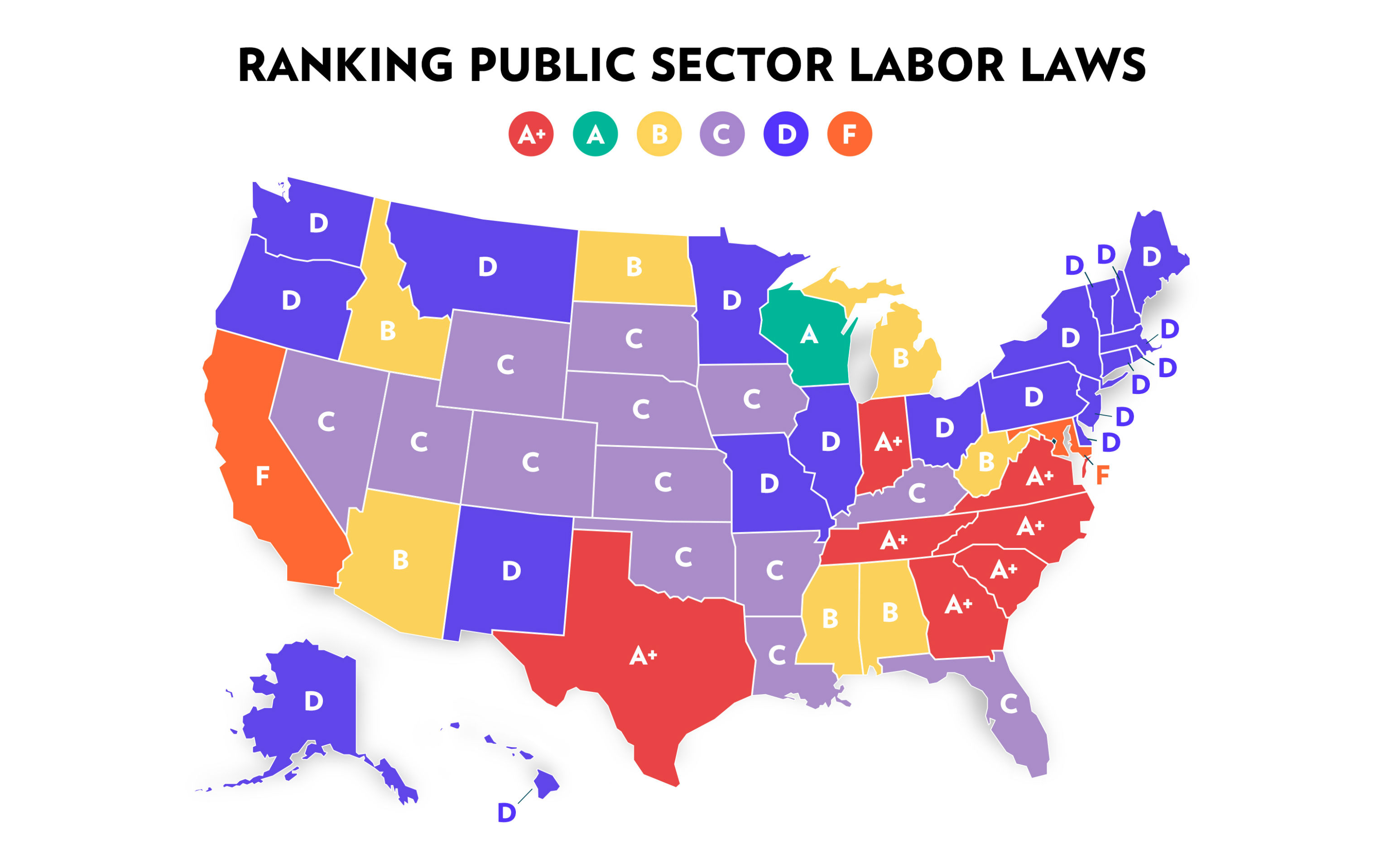Report
Transforming Labor
Executive Summary
In the last five years, Americans have seen an unprecedented sweep of public sector labor reforms across several states. Wisconsin, Michigan, Indiana—and most recently, West Virginia in July 2016—have all become right-to-work states. Other states have limited the scope of collective bargaining, increased the transparency of union contract negotiations, and created stronger protections for individual workers who do not want to be union members. For the first time since states enacted public sector collective bargaining laws in the mid-to-late twentieth century, right-to-work states outnumber forced-union states 26 to 24.
The reforms are even more remarkable given the largely inert nature of public sector labor law. At the national level, the National Labor Relations Act of 1935 (NLRA) governs most private sector unions. By contrast, public sector labor law, which provides collective bargaining privileges for state and local government workers, is set at the state level. In crafting their laws, the vast majority of states drew their statutory language and scope from the NLRA.1 Several provisions—such as how a union becomes (and remains) the official representative of all workers in a school or city office—have stayed untouched for 40 to 50 years.
During this time, basic individual freedoms, such as the freedom of association or freedom of speech, have been undermined by various labor laws and practices. Given the new momentum to reclaim these rights for public sector employees, this report outlines and examines public sector labor law across 11 measures that fall broadly into two categories: impact on taxpayers and impact on government workers.
| Measures that impact taxpayers and government budgets | Measures that impact individual and workers' rights |
| Legality of collective bargaining | Union certification (installing, affirming, or removing a union) |
| Scope of collective bargaining | Opt-out windows |
| Union release time | Exclusive representation/agency fees |
| Legality of worker strikes | Paycheck protection |
| Binding arbitration | Right to work |
| Union contract negotiation transparency |
To outline each state’s practices we combed through state-level laws, administrative codes, and regulations relating to public sector collective bargaining. Where no law or statutory provision existed on issues such as release time, opt-out windows, or payroll deduction of union dues, we examined local- and state-level labor agreements and used the designation “written in union contracts” to show how such matters are addressed at the negotiating table.

This approach allows policymakers to go beyond right-to-work status, revealing a wider spectrum of reforms that can produce budget savings, shield taxpayers from overspending, and guarantee greater protections of individual workers’ freedom of association. This analysis allows even highly graded states to see untapped areas for reform and improvement.
An interactive version of the 50 state table is available online:
https://www.commonwealthfoundation.org/state_labor_laws/
1 Seth D. Harris et al., Modern Labor Law in the Private and Public Sectors: Cases and Materials (New Providence: Matthew Bender and Company, 2013), 71.